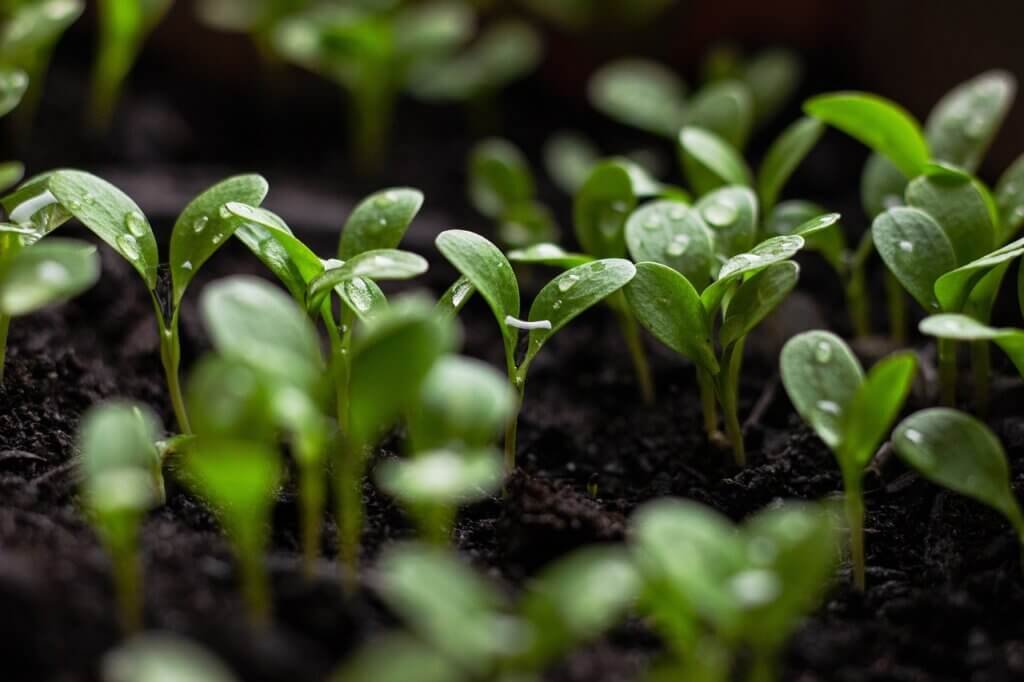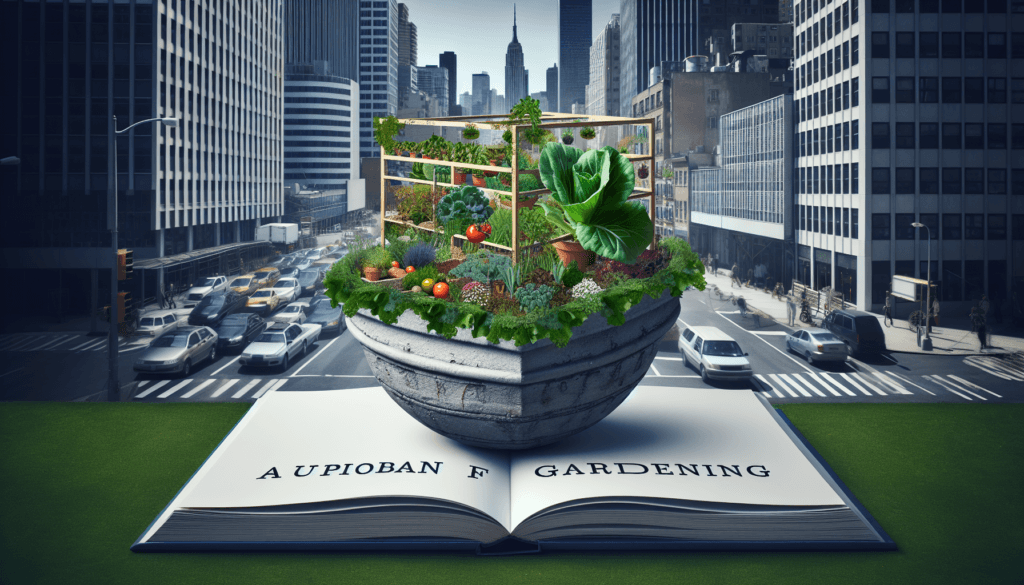Urban gardening is quickly becoming a popular trend among city dwellers who are eager to bring nature into their concrete jungles. From vertical gardens to rooftop beekeeping, the possibilities for growing your own plants and vegetables in urban spaces are endless. In this article, we will explore the up-and-coming urban gardening trends that are taking cities by storm, providing you with inspiration and ideas to create your own urban oasis. So grab your gardening gloves and get ready to embrace the green movement in the heart of the city!

Vertical Gardens
Vertical gardens, also known as living walls, are becoming increasingly popular in urban environments. These innovative displays of greenery allow you to maximize your garden space by growing plants vertically on walls or structures. Not only do vertical gardens add a touch of beauty to your surroundings, but they also have numerous benefits. They can help to purify the air, reduce energy consumption by providing shade, and even insulate buildings. Plus, they create a stunning focal point in any space.
One popular way to create a vertical garden is through the use of pallets. Pallet gardens involve attaching pallets to walls or fences and then filling the open spaces with soil and plants. This method is not only cost-effective but also allows for easy maintenance and mobility. You can reuse pallets and transform them into green walls, creating a lush and vibrant oasis in even the tightest of spaces.
If you’re looking to add a touch of green to your indoor environment, hanging planters are an excellent option. These versatile containers can be suspended from ceilings, hooks, or wall-mounted brackets, allowing you to bring the beauty of nature indoors without sacrificing precious floor space. Hanging planters come in various sizes and designs, making it easy to create visually appealing displays that complement your interior decor.
Small Space Gardening
Living in a small space doesn’t mean you have to give up your green thumb. Small space gardening is all about maximizing what you have and making the most of limited areas. One popular method is container gardening, where you plant flowers, herbs, or vegetables in pots or containers. This allows you to create a mobile garden that can be easily rearranged to suit your needs. Container gardening is perfect for balconies, small patios, or even windowsills.
If you have a balcony, balcony gardens are an excellent way to turn your outdoor space into a thriving oasis. By utilizing hanging baskets, railing planters, and vertical gardening techniques, you can transform your balcony into a lush retreat. Choose plants that thrive in containers and enjoy the beauty of your own personal garden sanctuary.
For those without outdoor space, window boxes provide the perfect solution. These narrow planters attach to the outside of windows, bringing a burst of color and greenery to your home or apartment. Window boxes are ideal for growing herbs, flowers, or even small vegetables, and they create a charming aesthetic that enhances any building façade.

Indoor Gardens
If you’re limited on outdoor space or simply prefer to grow plants indoors, there are many options available for creating an indoor garden. Herb gardens are a popular choice, as they not only add fragrance and visual appeal to your home but also provide fresh ingredients for cooking. Herbs such as basil, mint, and rosemary are easy to grow indoors and require minimal maintenance. Place your herb garden in a sunny spot, and you’ll have a constant supply of flavorful herbs at your fingertips.
For those looking to explore more advanced indoor gardening techniques, hydroponic systems offer a fascinating way to grow plants without soil. Hydroponics involve growing plants in a nutrient-rich water solution, allowing the roots to take in the necessary nutrients directly. This method reduces water usage, eliminates the risk of soil-borne diseases, and accelerates plant growth. Hydroponic systems come in various sizes, from small countertop setups to larger-scale systems.
Another indoor gardening option that has gained popularity in recent years is terrariums. These self-contained ecosystems consist of plants enclosed in glass containers, creating a miniature garden that requires minimal maintenance. Terrariums are perfect for those with limited time or for those who want to add a touch of nature to their desk, coffee table, or any other small space.
Community Gardens
Community gardens have become a beloved aspect of urban living, providing residents with a space to come together, connect with nature, and grow their own food. Allotment gardens, also known as community garden plots, allow individuals or families to rent a small piece of land on which they can cultivate their plants. This not only promotes self-sufficiency but also fosters a sense of community as gardeners come together to share tips, knowledge, and the fruits of their labor.
Shared gardens take the concept of community gardening a step further by providing a designated space for multiple individuals and families to work together on a larger scale. These shared gardens often feature communal beds, where everyone contributes to the gardening tasks and harvests. Shared gardens are a wonderful way to meet new people, practice teamwork, and enjoy the benefits of a collective effort.
Public spaces are also being transformed into beautiful gardens, creating green oases within urban landscapes. Parks, squares, and even vacant lots are being converted into vibrant and engaging spaces for the entire community to enjoy. These public gardens not only provide a visually appealing environment but also serve as educational resources, showcasing different plants, habitats, and gardening techniques.

Edible Landscaping
Gone are the days of typical ornamental landscapes. Edible landscaping is a growing trend that combines beauty and functionality by incorporating edible plants into traditional garden designs. Fruit trees, such as apple, pear, and cherry trees, are popular choices for creating a fruitful landscape. With proper pruning and care, these trees can provide delicious, homegrown fruits year after year.
Vegetable beds are another essential component of edible landscaping. These raised beds can be designed to fit into any space, from small city yards to larger suburban gardens. By growing your vegetables, you have control over the types of crops and the use of pesticides, ensuring that you’re consuming fresh, organic produce.
Herb spirals are a unique addition to any edible landscape. These compact, spiral-shaped gardens feature a variety of herbs planted at different levels. The spiral design allows for optimal sunlight exposure, creating microclimates that suit the various herb preferences. Herb spirals are not only functional but also visually appealing, adding a touch of whimsy to your garden.
Pollinator Gardens
Creating a pollinator garden is not only beneficial for the environment, but it also adds beauty and life to your outdoor space. Butterfly gardens are specifically designed to attract and support butterflies throughout their lifecycle. By including a variety of nectar-rich flowers, host plants for caterpillars, and water sources, you can create a haven for these beautiful creatures. Watching butterflies flutter around your garden is truly a rewarding experience.
Bee-friendly gardens are another important aspect of pollinator gardening. Bees play a crucial role in pollination, helping to fertilize plants and ensure their survival. By planting a diverse array of native flowers and providing nesting habitats, you can help support these essential pollinators. Bees are not only fascinating to watch but also provide us with delicious honey, making bee-friendly gardens a win-win for both humans and nature.
If you’re interested in attracting hummingbirds to your garden, consider planting a hummingbird garden. These small, vibrant birds are known for their acrobatic flights and their love of nectar-rich flowers. By including a variety of tubular-shaped flowers in your garden, you can provide a food source for these magnificent creatures. Additionally, make sure to provide perches and water sources, as hummingbirds need both to thrive.

Gardening with Native Plants
Gardening with native plants is becoming increasingly popular, as these species are well-suited to local environments and require less maintenance than non-native plants. Native plant species have adapted to the specific climate, soil conditions, and wildlife of an area, making them more resilient and less dependent on fertilizers and pesticides. By incorporating native plants into your garden, you can create a habitat that supports local wildlife and preserves the unique ecosystems of your region.
Wildflower meadows are a prime example of gardening with native plants. These colorful and diverse habitats not only provide a stunning display of natural beauty but also serve as vital food sources for bees, butterflies, and other pollinators. Transitioning a lawn or unused area of your yard into a wildflower meadow can revitalize the landscape and invite a variety of wildlife into your garden.
Xeriscaping, or water-wise gardening, is another aspect of gardening with native plants. Xeriscaping focuses on selecting and arranging drought-tolerant plants that require minimal irrigation. By incorporating native plants with low water requirements and utilizing efficient watering techniques, such as mulching and drip irrigation, you can create a water-wise garden that conserves this precious resource while still enjoying a lush and vibrant landscape.
Permaculture Gardens
Permaculture gardening is an approach that aims to create sustainable and self-sufficient ecosystems that mimic natural systems. Food forests are a prominent feature of permaculture gardens, consisting of a diverse assortment of fruit trees, shrubs, herbs, and vegetables. These multi-layered gardens provide a variety of food sources, support local wildlife, and help to create a more resilient and sustainable food system.
Companion planting is another principle of permaculture gardening. By strategically planting compatible species together, you can enhance plant growth, repel pests, and attract beneficial insects. For example, planting marigolds alongside tomatoes can deter pests like nematodes, while also adding color and beauty to your garden. Companion planting is a time-tested technique that promotes plant health and fosters biodiversity.
Rainwater harvesting is a crucial component of permaculture gardening and sustainable living. By collecting rainwater and utilizing it for irrigation, you can reduce your reliance on municipal water supplies and conserve this precious resource. Rainwater harvesting techniques vary from simple rain barrels to more complex systems that capture and store larger volumes of water. Implementing rainwater harvesting in your garden helps to address water scarcity issues while minimizing your environmental impact.

Vertical Farming
As urban spaces become more limited, the need for innovative farming methods is on the rise. Vertical farming is a cutting-edge technique that involves growing plants in stacked layers or towers vertically, instead of in traditional horizontal fields. This method maximizes space utilization and allows for year-round cultivation in controlled indoor environments.
Hydroponics is a commonly used system in vertical farming, where plants are grown in nutrient-rich water without soil. This technique provides plants with all the necessary nutrients and requires less water compared to traditional farming methods. Hydroponics also eliminates the need for chemical fertilizers, making it an environmentally friendly choice.
Aeroponics is another form of vertical farming that suspends plant roots in the air and mists them with a nutrient-rich solution. By delivering nutrients directly to the roots, aeroponics promotes rapid growth and the efficient use of resources. This method is highly efficient and suitable for growing a variety of crops.
Tower gardens are a popular option for home vertical farming. These compact vertical systems allow you to grow a variety of fruits, vegetables, and herbs in stackable layers, utilizing minimal space. Tower gardens typically use vertical hydroponic or aeroponic systems, providing an easy and efficient way to grow fresh produce in urban environments.
Self-Sustaining Gardens
Self-sustaining gardens are designed to function as independent ecosystems, requiring minimal external inputs and creating a balanced and harmonious environment. Biodynamic gardening is an approach that emphasizes the interconnectivity of plants, animals, and the surrounding ecosystem. By following specific planting and harvesting practices, using natural soil amendments, and incorporating composting and cover cropping, biodynamic gardeners aim to create a garden that is in tune with nature’s rhythms.
Crop rotation is an essential component of self-sustaining gardens. By rotating crops annually, you can prevent soil depletion, manage pests and diseases, and optimize nutrient uptake. Different plants have different nutrient requirements and can affect the soil composition differently. By shifting crops to new locations each year, you can maintain soil fertility and overall garden health.
Seed saving is the practice of collecting and storing seeds from your garden’s plants for future use. By saving seeds from open-pollinated or heirloom plants, you can preserve their genetic diversity and adaptability to your specific growing conditions. Seed saving also allows you to reduce reliance on commercially produced seeds and maintain a sustainable cycle of plant reproduction.
By embracing self-sustaining gardening practices, you can create a garden that not only provides you with fresh produce but also contributes to the overall health of the environment. These methods promote biodiversity, conserve resources, and reduce reliance on external inputs, making your garden truly self-sufficient.


